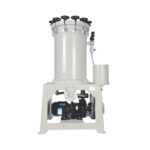# Medium-Sized Power Plants: Efficiency and Sustainability in Energy Generation
In the evolving landscape of energy production, medium-sized power plants have emerged as a critical component in balancing efficiency, sustainability, and scalability. These facilities, often ranging from 10 to 100 megawatts (MW) in capacity, bridge the gap between large-scale power stations and small, decentralized energy systems. This article explores the unique advantages of medium-sized power plants and their role in shaping a more sustainable energy future.
## The Role of Medium-Sized Power Plants in Modern Energy Systems
Medium-sized power plants play a pivotal role in modern energy systems by offering a flexible and adaptable solution to meet varying energy demands. Unlike large power plants, which often require significant infrastructure and long lead times, medium-sized facilities can be deployed more quickly and tailored to specific regional needs. This flexibility makes them ideal for supporting renewable energy integration, grid stability, and localized energy production.
### Efficiency and Operational Advantages
One of the key benefits of medium-sized power plants is their operational efficiency. These plants are designed to optimize energy output while minimizing waste, making them more cost-effective and environmentally friendly compared to larger counterparts. Advanced technologies, such as combined heat and power (CHP) systems, further enhance their efficiency by utilizing waste heat for additional energy generation or industrial processes.
Moreover, medium-sized power plants are often equipped with modular designs, allowing for easier upgrades and maintenance. This modularity ensures that the plants can adapt to changing energy demands and technological advancements without requiring complete overhauls.
### Sustainability and Environmental Impact
Sustainability is a cornerstone of medium-sized power plants. Many of these facilities are designed to incorporate renewable energy sources, such as solar, wind, or biomass, reducing reliance on fossil fuels and lowering greenhouse gas emissions. Additionally, their smaller scale minimizes land use and environmental disruption, making them a more eco-friendly option compared to large-scale power stations.
Medium-sized power plants also contribute to energy decentralization, reducing the need for long-distance transmission lines and associated energy losses. This localized approach not only enhances energy security but also supports community-based energy initiatives, fostering a more resilient and sustainable energy ecosystem.
## Challenges and Future Prospects
Despite their numerous advantages, medium-sized power plants face challenges such as regulatory hurdles, financing constraints, and technological limitations. However, ongoing advancements in energy storage, smart grid technologies, and policy support are paving the way for their broader adoption.
Looking ahead, medium-sized power plants are poised to play an increasingly important role in the global energy transition. By combining efficiency, sustainability, and adaptability, these facilities offer a viable pathway toward a cleaner, more resilient energy future.
### Conclusion
Medium-sized power plants represent a balanced approach to energy generation, addressing the need for efficiency, sustainability, and scalability. As the world continues to shift toward renewable energy and decentralized systems, these facilities will remain a cornerstone of modern energy infrastructure. By embracing innovation and overcoming challenges, medium-sized power plants can help drive the transition to a more sustainable and equitable energy landscape.
Keyword: Medium-sized power plants
